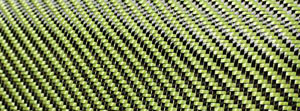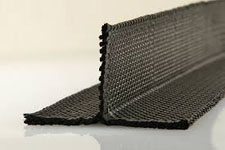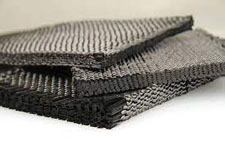Hybrid and 3D Weaves
As composite technology continues to advance, innovative woven fabric solutions have emerged to address specific needs in various industries. This section will provide insights into hybrid and 3D woven fabrics, expanding your understanding of the available options in the realm of composite materials.
(A) Hybrid Woven Fabrics

Hybrid woven fabrics combine two or more different types of fibers within a single fabric. This approach allows manufacturers to capitalize on the unique properties of each fiber type, resulting in a material with improved performance characteristics. For instance, combining carbon fibers and aramid fibers can yield a fabric with excellent strength, stiffness, and impact resistance. Hybrid woven fabrics are ideal for applications requiring specific mechanical or thermal properties that cannot be achieved with a single type of fiber.
(B) 3D Woven Fabrics
 
Three-dimensional (3D) woven fabrics represent a significant advancement in the field of composite materials. Unlike traditional 2D fabrics, which consist of fibers interlaced in a flat plane, 3D woven fabrics feature fibers that interconnect in multiple directions, creating a three-dimensional structure. This innovative weaving technology offers several advantages over traditional 2D fabrics:
1. Improved mechanical properties
3D woven fabrics have superior strength and stiffness in all three dimensions, making them well-suited for applications requiring enhanced structural performance.
2. Enhanced damage tolerance
The complex fiber architecture of 3D woven fabrics distributes loads more effectively, resulting in increased damage tolerance and impact resistance.
3. Reduced delamination risk
Delamination is a common failure mode in composite laminates, often caused by out-of-plane stresses. The interconnected fibers in 3D woven fabrics help mitigate this risk, improving the overall durability and longevity of the composite component.
4. Simplified manufacturing process
3D woven fabrics can be shaped into near-net geometries, which reduces the need for cutting and trimming, thus simplifying the manufacturing process and reducing waste.
In conclusion, the world of woven fabrics offers a wide array of options to meet the unique requirements of various composite applications. From traditional 2D weaves to advanced hybrid and 3D woven fabrics, understanding the characteristics, advantages, and limitations of each fabric type is essential for making informed decisions that contribute to the success and growth of your composite projects. By staying up-to-date with the latest advancements in woven fabric technology, you can ensure that your composite components deliver optimal performance and durability in even the most demanding applications.
|

